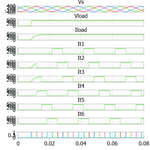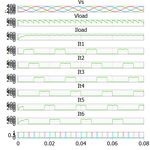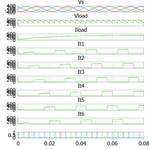jonnybgood
Full Member level 4
I am simulating a single Phase Full Wave Uncontrolled Rectifier without a flywheel diode. From the waveforms I found that the Inductive Load voltage is not going into negative part due to inductor current.
Is it that the other two diodes in the bridge are serving as two flywheel diodes in series for dissipating the inductor current? If yes, why is that I read some online sources describing negative load voltages without the flywheel diode connected? I am using PLECS with matlab. With the half wave rectifier I have managed to demonstrate this phenomena since there is only one diode.
Is it that the other two diodes in the bridge are serving as two flywheel diodes in series for dissipating the inductor current? If yes, why is that I read some online sources describing negative load voltages without the flywheel diode connected? I am using PLECS with matlab. With the half wave rectifier I have managed to demonstrate this phenomena since there is only one diode.



